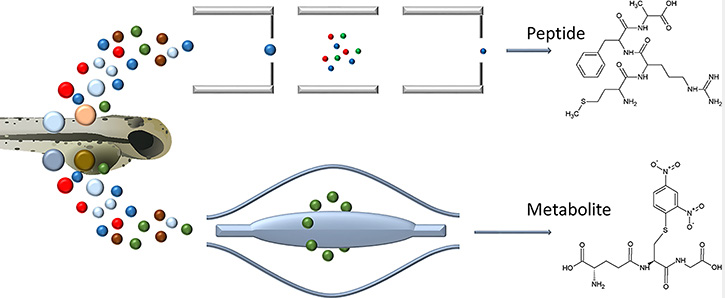Department Environmental Toxicology
GST-based biotransformation in fish

Zebrafish early life stages and cell lines can be used as alternative toxicity testing models for the study of bioactive compounds in both environmental toxicology and human toxicology fields, the latter made possible thanks to their high genetic homology to humans. However, to further improve reliability of toxicity assessment performed with these model systems, their biotransformation capacity needs to be better understood.
One important biotransformation pathway is the mercapturic acid pathway, involved in detoxification of electrophilic substances. For some substances, this route can also result in activation. The first step in the mercapturic acid pathway is the electrophile’s conjugation with glutathione (GSH), which is catalyzed by glutathione S-transferase (GST) enzymes. The conjugate is then transformed to the excretable mercapturate. Our recent work in zebrafish early life stages and embryonic cell line PAC2 has confirmed that the mercapturic acid pathway is functional in both models, as we revealed the expression of a broad repertoire of cytosolic GSTs on the protein level and demonstrated the formation of the biotransformation products within the mercapturic acid pathway under exposure to nontoxic concentration of a model electrophile CDNB (described in the publications by Tierbach et al).
Currently, Veysel Demir works with the zebrafish PAC2 cells to investigate whether the expression of GST proteins is regulated by exposure to their substrates, aiming to better understand the consequences of exposure to chemical mixtures containing these substances
Publications
Funding
Eawag (2017-2020)
SNF (2022, Scholars at Risk grant to
V. Demir)



